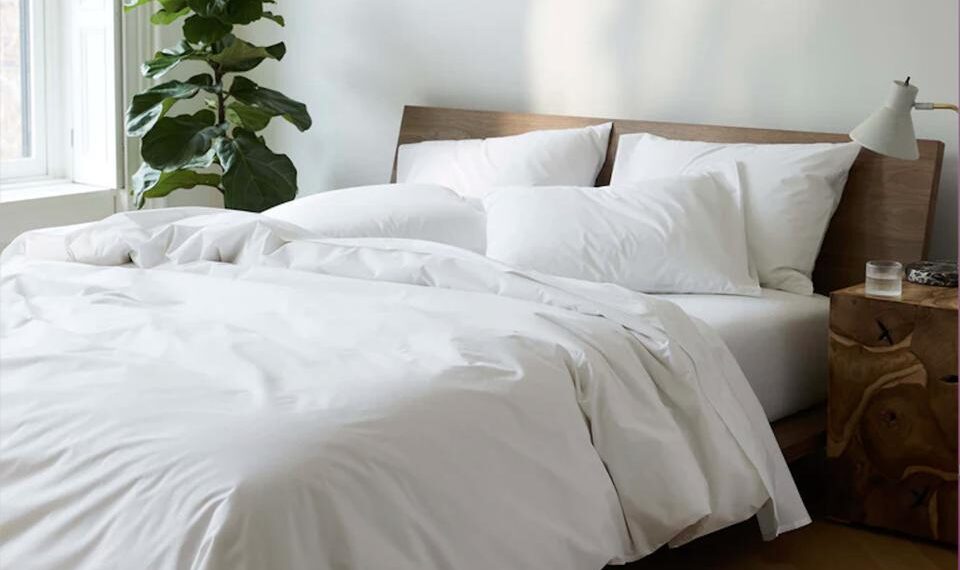On the off chance that you get a decent eight hours of rest consistently, you’re unwittingly spending 33% of your day in bed. While a joyful rest might seem like the least difficult of extravagances, picking the right sheet material and its clothes will have a universe of an effect an route. As far as we might be concerned, bed sheets are the most underestimated components of stylistic layout in the room. While it outwardly loans its stylish to the style of the room, sinking into a bunch of extravagant sheets makes a shelter of solace inside the room.
To find the ideal bed sheets for your room, you’ll have to resolve your own style inclinations, everyday way of life decisions and a couple of estimating subtleties an route. In the event that you’re uncertain about where to begin, here’s a convenient aide defying down every one of the norms in the bed sheet game.
1. Characterize your Rest Inclinations
By the day’s end, do you cherish sinking into warm fluffy layers? Or on the other hand, do you live in the jungles and favor something more breezy and cooling? Do you get the sweats frequently around evening time (don’t we as a whole?), and how frequently do you wash your bed materials? Everything from the textures that vibe agreeable on your skin to the environment you live in (and, surprisingly, the consideration you take while washing your bed sheets) are significant variables to consider.
2. Pick the Right Material
The primary textures that strike a chord when we contemplate bed sheets is likely cotton or cloth. While these are the most well known decisions, there is a scope of materials to browse with unmistakable characteristics that put every aside from the other:
Cotton
As the most well known for all sheet material materials, even sleeping cushions, 100 percent cotton sheets work best in practically all Indian homes.
The nature of a cotton sheet, in any case, is still up in the air by its staple size. The more extended the staple size, the more grounded and smoother the yarn, which winds around a gentler sheet with not so much pilling but rather more toughness. Extra lengthy staples are tracked down in pima and supima cotton, while Egyptian cotton is produced using handpicked filaments that weave an extra-fine milder yarn.
Material
As a breathable and normal texture, cloth works mystically in the Indian environment — remaining cool in summer and giving delicate warmth in winter. With thicker filaments than cotton, material has an unobtrusive surface and a generally gentler, fuzzier completion. Gotten from the flax plant, this material is likewise dampness wicking, causing it to feel cooler than cotton.
Wool
From socks and coats to tosses wool and downy are comfortable materials we love enveloping ourselves with to feel hot in the colder time of year. This makes it a completely agreeable material for bed sheets, too, in the colder months of the year. Wool sheets can be made from fleece, cotton, or a mix of normal filaments or engineered materials.
Silk
Produced using the cases of silkworms, silk is a great regular fiber that is a very breathable and sumptuous choice for bed sheets. Solid yet lightweight with a characteristic sheen and satiny surface, silk is likewise a low guide of intensity making it a cool texture for hotter evenings. A firm #1 among entertainers for ages for its low-static grip and smooth surface, silk pillowcases and sheets are said to cause lesser hair fall and decrease the presence of flaws and kinks over the long run. Comfort and Style with Dommelin Hoeslaken Katoen Rood 150 x 200 cm.
Plant-Based Strands
Considered as semi-engineered materials, a few textures have been imagined over energy for a cleaner and greener texture fabricating process. These additionally function as breathable choices for bed sheets that are reasonable, also.
3. Does the Weave Matter?
To figure out which bed sheet is ideal for you, notice the wind of the texture. We frequently hear terms, for example, additional fresh and super delicate utilized for cotton bed sheets. These are percale sheets, which are regularly produced using natural cotton strings woven in a tight example portrayed by a standard one-more than one-under weave. Sateen weave feels more sensitive with a three-north of one-under weave, making it delicate and smooth with a slight sheen. A shirt weave is known to be stretchier and gentler because of its more modest, more tight, single-sew organization. Hotter materials, for example, wool are accessible either in a plain or twill weave, and can be snoozed or raised, which is a brushing procedure that gives a somewhat finished and velvet-like feel.
4. What is String Count?
The string count of a sheet is estimated by the quantity of vertical (twist) and even (weft) strings in a single square inch of texture. While you could think a higher string count rises to greater quality, this is only a promoting ploy. Albeit a higher string count makes a gentler bed sheet, a typical reach to pay special attention to is anyplace between 200 to 500.
Anyplace lower than 180 and you’ll have the option to see minuscule openings when you view the sheet before a light. Yet, never at any point succumb to a sheet that is showcased with a 1000+ string count this is accomplished by curving bad quality strings around one another or utilizing multi-handle textures. Your bed sheet will wind up feeling course or unpleasant!
5. Prints or a Solitary Tone?
All-white, insignificant and brilliant or an uproar of dynamic prints and variety? The sheets you decide for your bed outwardly add to the remainder of the room’s stylistic layout. In the event that you can’t choose a style or variety range that works for your bed’s cloths, begin with your variety. Or then again, pick a lighter more impartial tint like ecru or grayish as a reasonable material to coordinate prints or different varieties with your pads, duvet or pads.
This standard likewise works for the materials you pick. You could coordinate cloth bedsheets with pair cotton or silk pillowcases for a smoother material against your face. This will likewise get a play of surfaces on the bed.
6. Size Matters
There’s nothing more disappointing than picking the ideal bed sheet in the smoothest texture and dazzling variety, just to acknowledge it doesn’t fit accurately on your bed. While purchasing a sheet, or some other bed materials, really take a look at the size to ensure it fits impeccably around and under your sleeping pad. While beds and beddings come in standard sizes, it’s consistently more secure to quantify your sleeping pad’s length, breath and profundity to guarantee a sheet will fit snuggly set up. This is considerably more significant assuming you’re purchasing fitted sheets that need to twist firmly around the finishes of your sleeping pad. Chalking up your bed’s size to customary measures, for example, sovereign, lord, twofold and single doesn’t necessarily get the job done. Estimating in certain nations and brands run bigger or much more modest than expected.
7. Really focusing on your Bedsheets
Without a discussion, bed sheets should be washed routinely to keep your bed new and clean. Normally, you ought to wash your sheets one time each week, so switching back and forth between at least two sets is dependably really smart to expand the texture’s life span. Nonetheless, before you purchase a bed sheet, you ought to consider how much mileage it will get with each utilization. In the event that you apply a ton of item all over and hair, or will more often than not sweat a great deal around evening time, this will stain your sheet consistently. On the off chance that this requires substantial stain evacuation or blanching, you could need to consider a more grounded material with a more tight wind around, for example, supima cotton for your sheets. Prior to putting resources into fragile textures like silk, read the washing guidelines first. Assuming the material requires hand washing each time or cleaning, ensure you have the opportunity or spending plan for it prior to confronting the purchaser’s regret.






